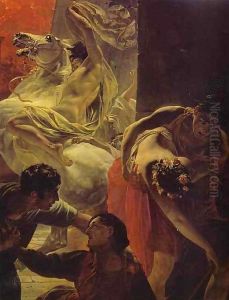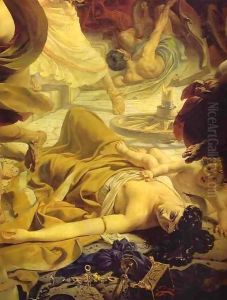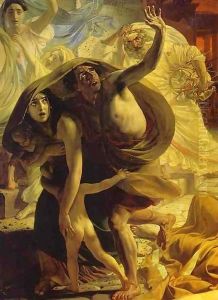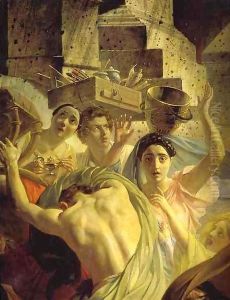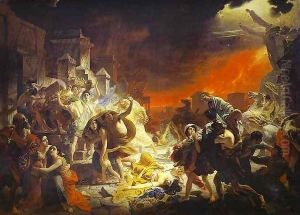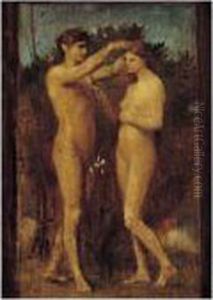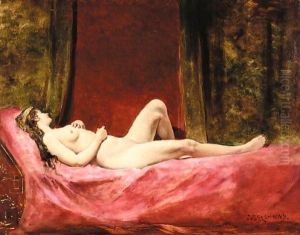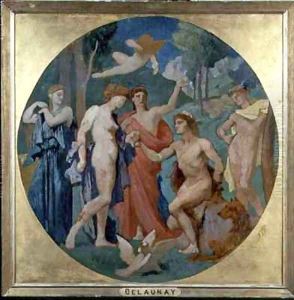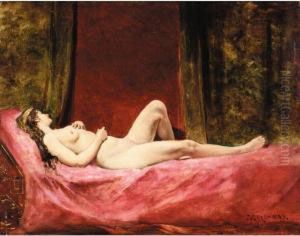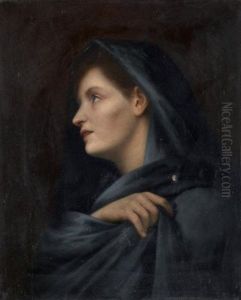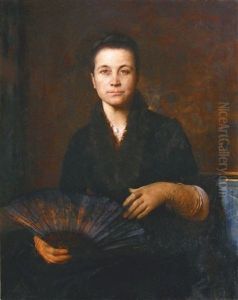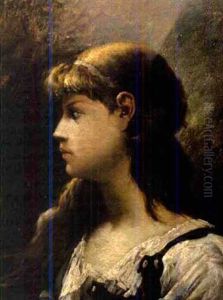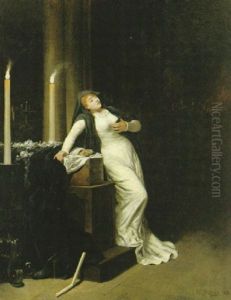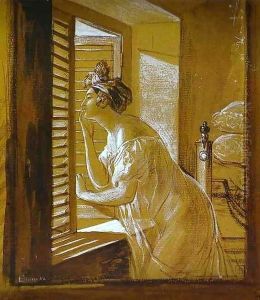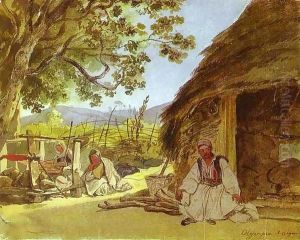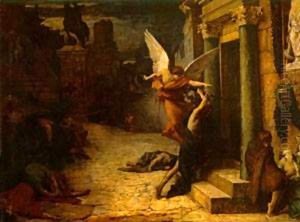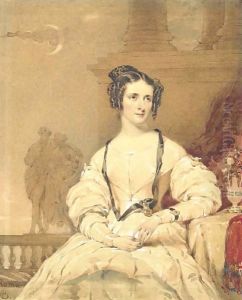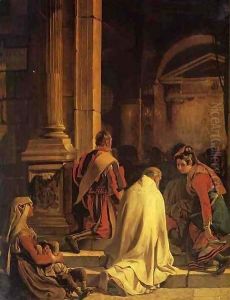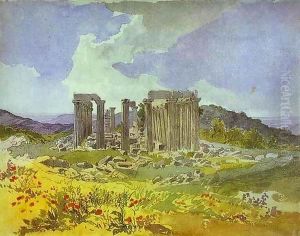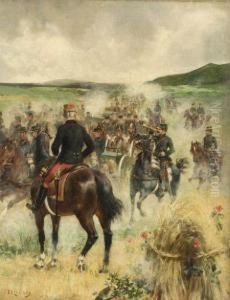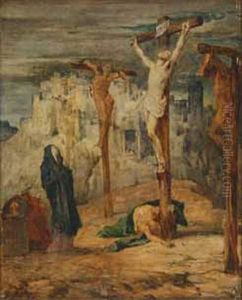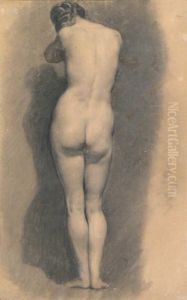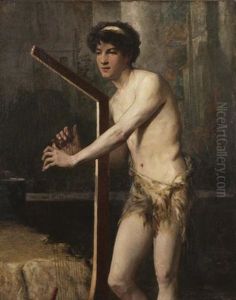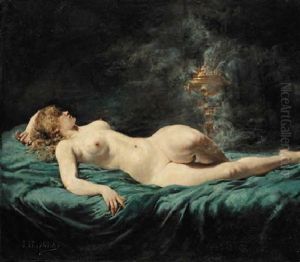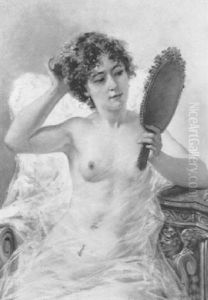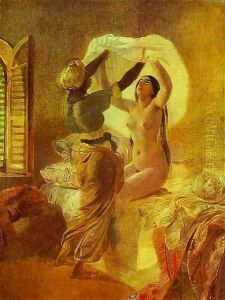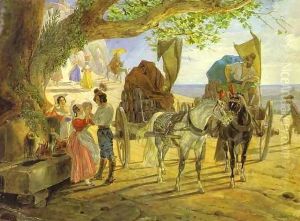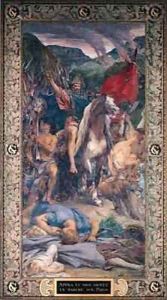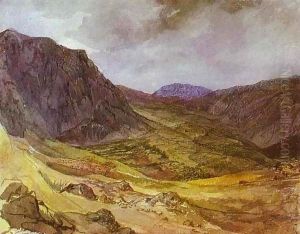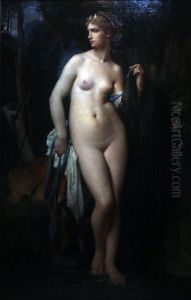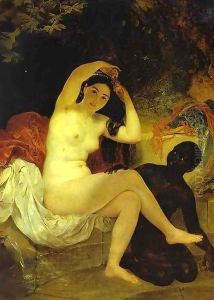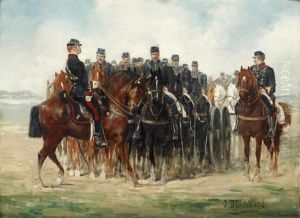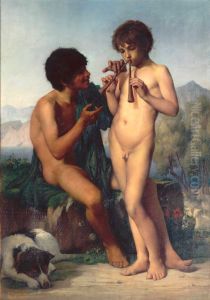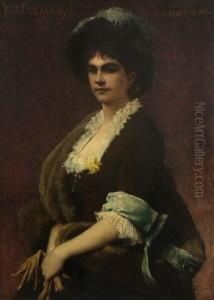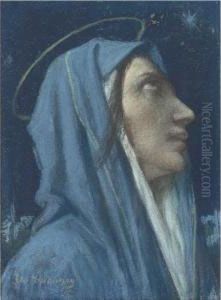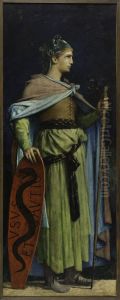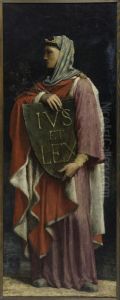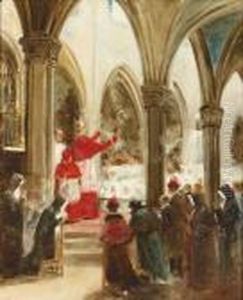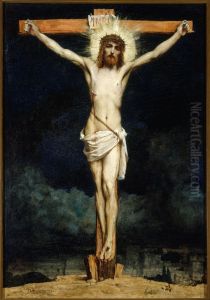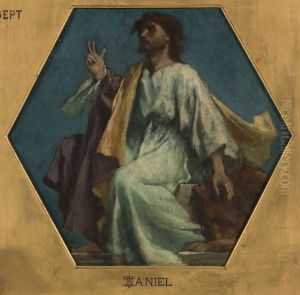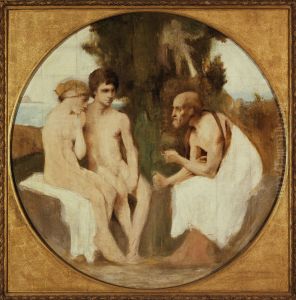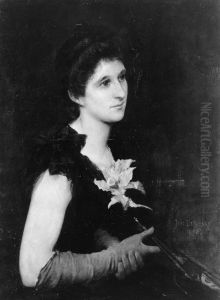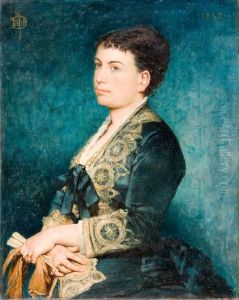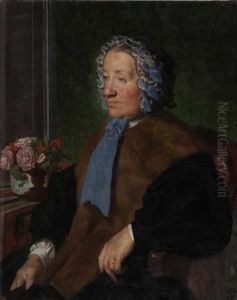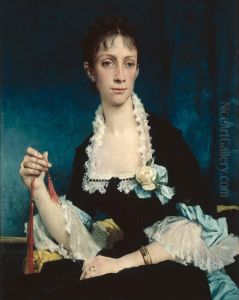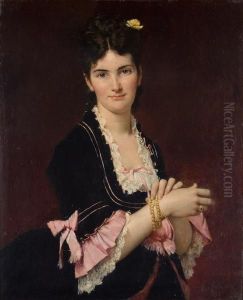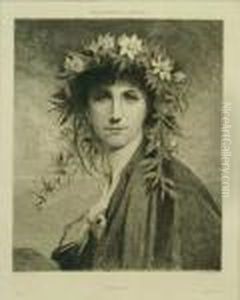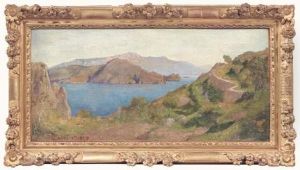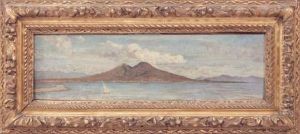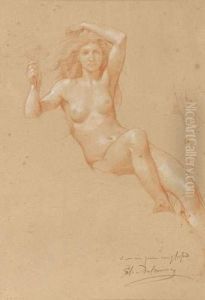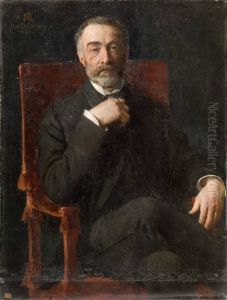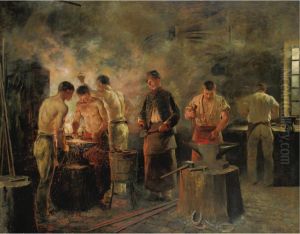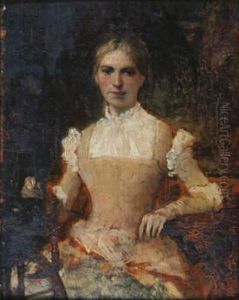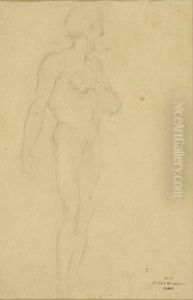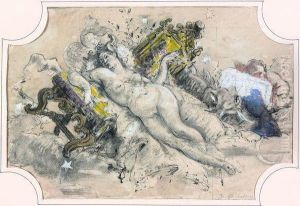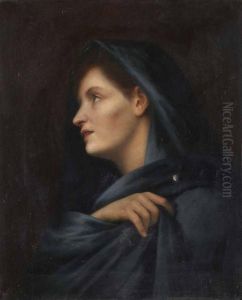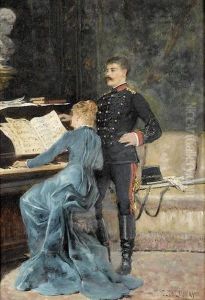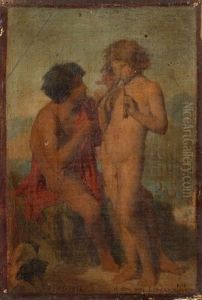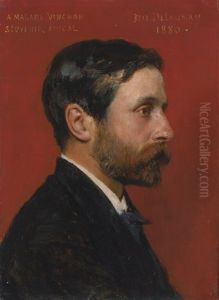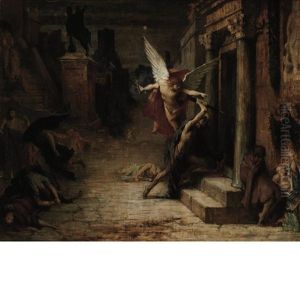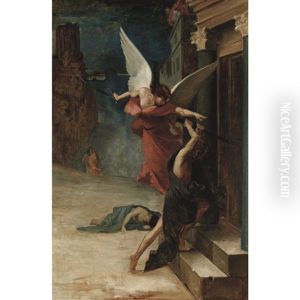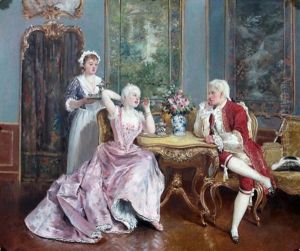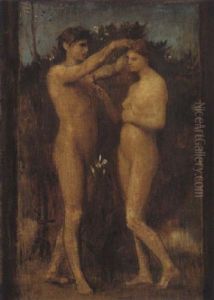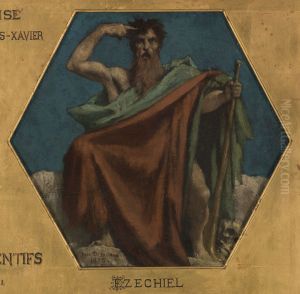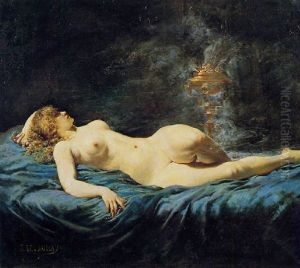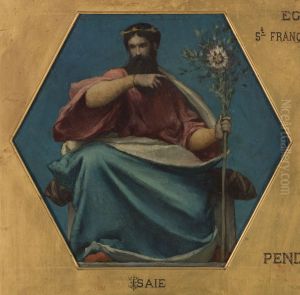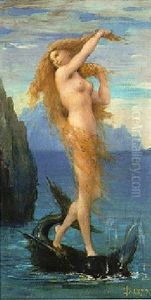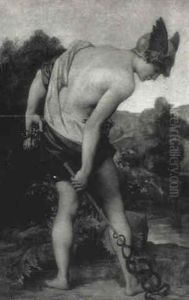Jules-Elie Delaunay Paintings
Jules-Elie Delaunay was a distinguished French painter, born on June 13, 1828, in Nantes, France. Known for his classical and academic style, he was a product of the French academic system that dominated the arts in the 19th century. Delaunay received his initial artistic training at the École des Beaux-Arts in Paris under the tutelage of Hippolyte Flandrin and Léon Cogniet, both of whom were influential figures in the French art scene of the time.
Delaunay's works are characterized by their meticulous detail, vibrant colors, and adherence to the traditions of the Old Masters. He was greatly influenced by the works of the Renaissance and sought to incorporate the clarity and precision of that era into his own paintings. Delaunay was particularly noted for his skill in the use of chiaroscuro, the technique of using strong contrasts between light and dark to give the illusion of volume in modeling three-dimensional objects and figures.
Throughout his career, Delaunay achieved considerable success and recognition. He won the prestigious Prix de Rome in 1856, which allowed him to study in Rome for an extended period. This experience had a profound impact on his artistic development, as he immersed himself in the study of classical art and the works of the Italian Renaissance. During his time in Rome, he produced several notable works, including historical and mythological scenes that were well received by the French Academy.
Upon his return to Paris, Delaunay continued to work and exhibit at the Paris Salon, where he garnered accolades for his paintings. His work was also exhibited internationally, and he was awarded medals at exhibitions in Paris and Vienna. Delaunay's reputation as a teacher grew, and he was appointed as a professor at the École des Beaux-Arts in 1875. He influenced a generation of artists, passing on the traditions and techniques of the French academic style.
Jules-Elie Delaunay's contribution to French art was significant, and he was recognized for his achievements with his election to the Académie des Beaux-Arts in 1879. His work continues to be appreciated for its beauty, technical prowess, and its embodiment of 19th-century academic art ideals. Delaunay died on September 5, 1891, in Paris, leaving behind a legacy of work that remains influential in the study and appreciation of French academic painting.
